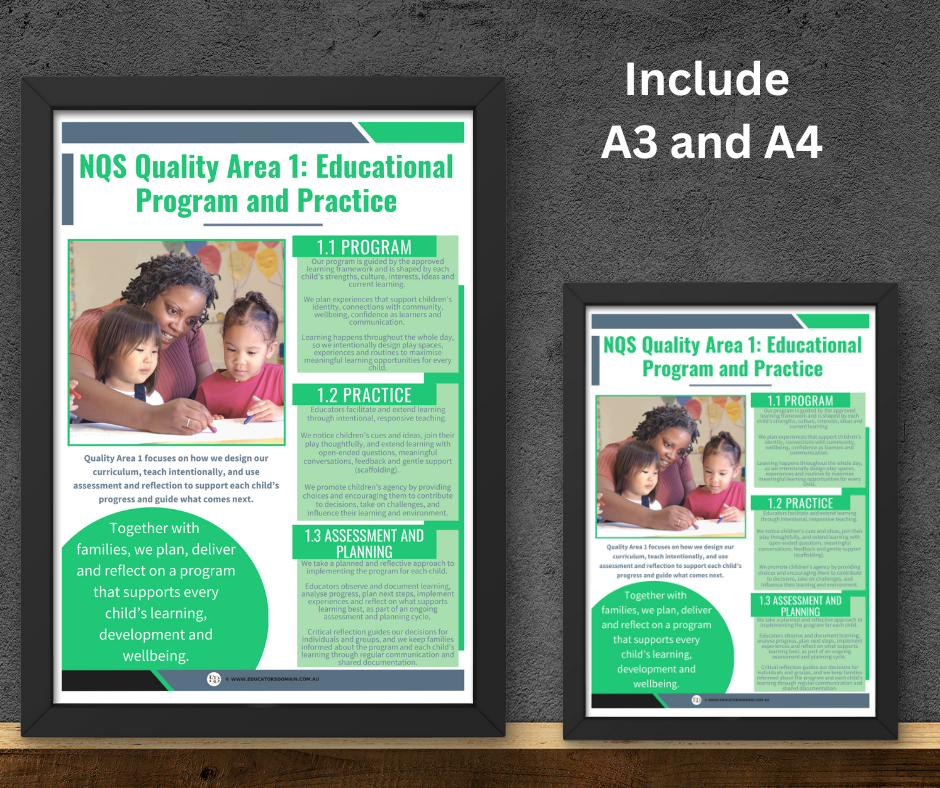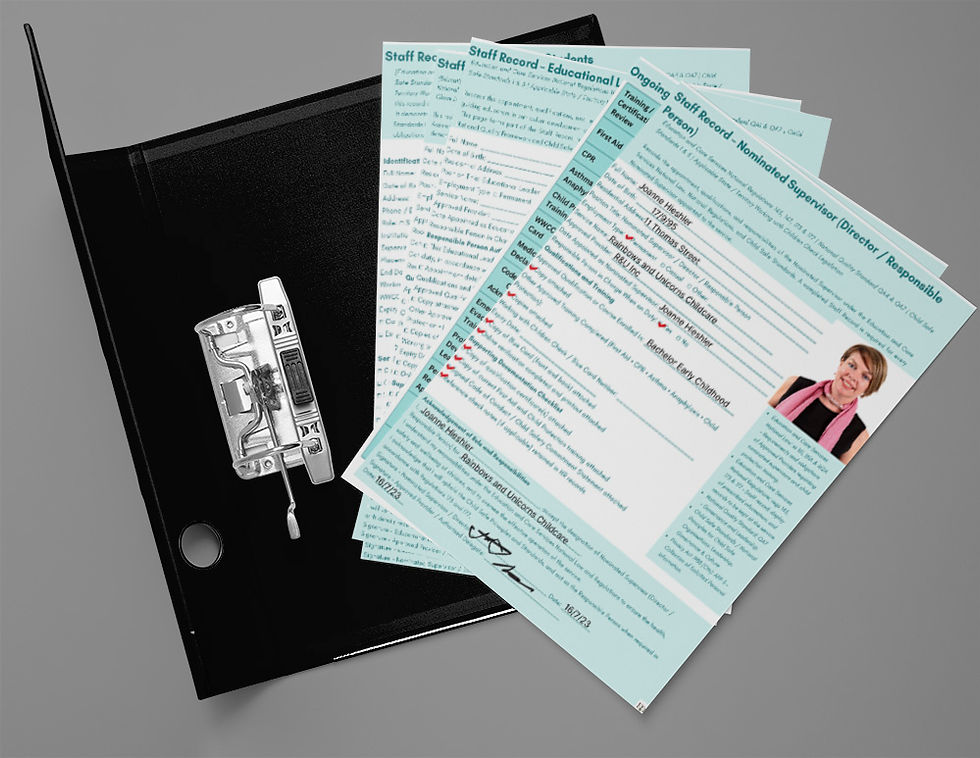Setting up a Quality Improvement Plan
- The Educators' Domain

- Jul 3, 2023
- 3 min read
Setting up a Quality Improvement Plan (QIP) is an important process to ensure continuous improvement in your service. The aim of a QIP is to help providers self-assess their performance in delivering quality education and care, and to plan future improvements.
A QIP must:
include an assessment of the programs and practices at the service against the National Quality Standard and National Regulations
identify areas for improvement
include a statement about the service’s philosophy.
Here are some steps to help you set up a QIP:
Assess your current practices:
- Conduct an assessment of your service to identify areas that require improvement. This can include reviewing policies, procedures, and practices, as well as gathering feedback from staff, families, and children.
Set goals and priorities:
- Based on the assessment, identify specific goals and priorities for improvement. These goals should align with the National Quality Standard (NQS) and the needs of your service. You may prioritise areas for improvement against the 7 quality areas of the NQS and the related regulatory requirements. There is no requirement that all 15 standards and 40 elements are addressed in the QIP. The QIP should include the key areas for improvement.
Develop strategies and actions:
- Determine the strategies and actions that will help you achieve your goals. These can include staff training, policy development, changes to procedures, or implementing new programs or initiatives.
Allocate resources:
- Identify the resources needed to support the implementation of your strategies and actions. This can include financial resources, staffing, professional development opportunities, or materials and equipment.
Assign responsibilities:
- Clearly assign responsibilities to staff members or teams for implementing and monitoring the strategies and actions outlined in the QIP. This ensures accountability and effective coordination.
Develop a timeline:
- Create a timeline that outlines when each action will be implemented and completed. This helps to keep everyone on track and ensures progress is being made towards achieving the goals.
Monitor and evaluate:
- Regularly monitor and evaluate the progress of your QIP. This can be done through observations, feedback from staff, families, and children, as well as reviewing documentation and data.
Reflect and review:
- Reflect on the outcomes and impact of the implemented strategies and actions. Review the effectiveness of the QIP and make any necessary adjustments or revisions based on the results.
Communicate and engage:
- Regularly communicate with staff, families, and other stakeholders about the progress and outcomes of the QIP. Engage them in the process by seeking feedback, input, and suggestions for improvement.
Document and report:
- Keep a record of your QIP, including goals, actions, and outcomes. This documentation will help you track progress over time and provide evidence for regulatory requirements or accreditation processes.
A QIP must be:
updated at least once a year
available on request by the regulatory authority or parents of a child enrolled or looking to enrol at the service
available at the principal office for family day care services.
prepared for a new service within 3 months of the service approval being granted and provided to the regulatory authority on request.
Remember, the QIP is a dynamic document that should be regularly reviewed, updated, and refined to ensure ongoing improvement. It should be seen as a collaborative and iterative process involving all stakeholders in your service.
We have several products to assist you will developing your QIP, involving families, seeking feedback from educators, children and your community.










































Comments